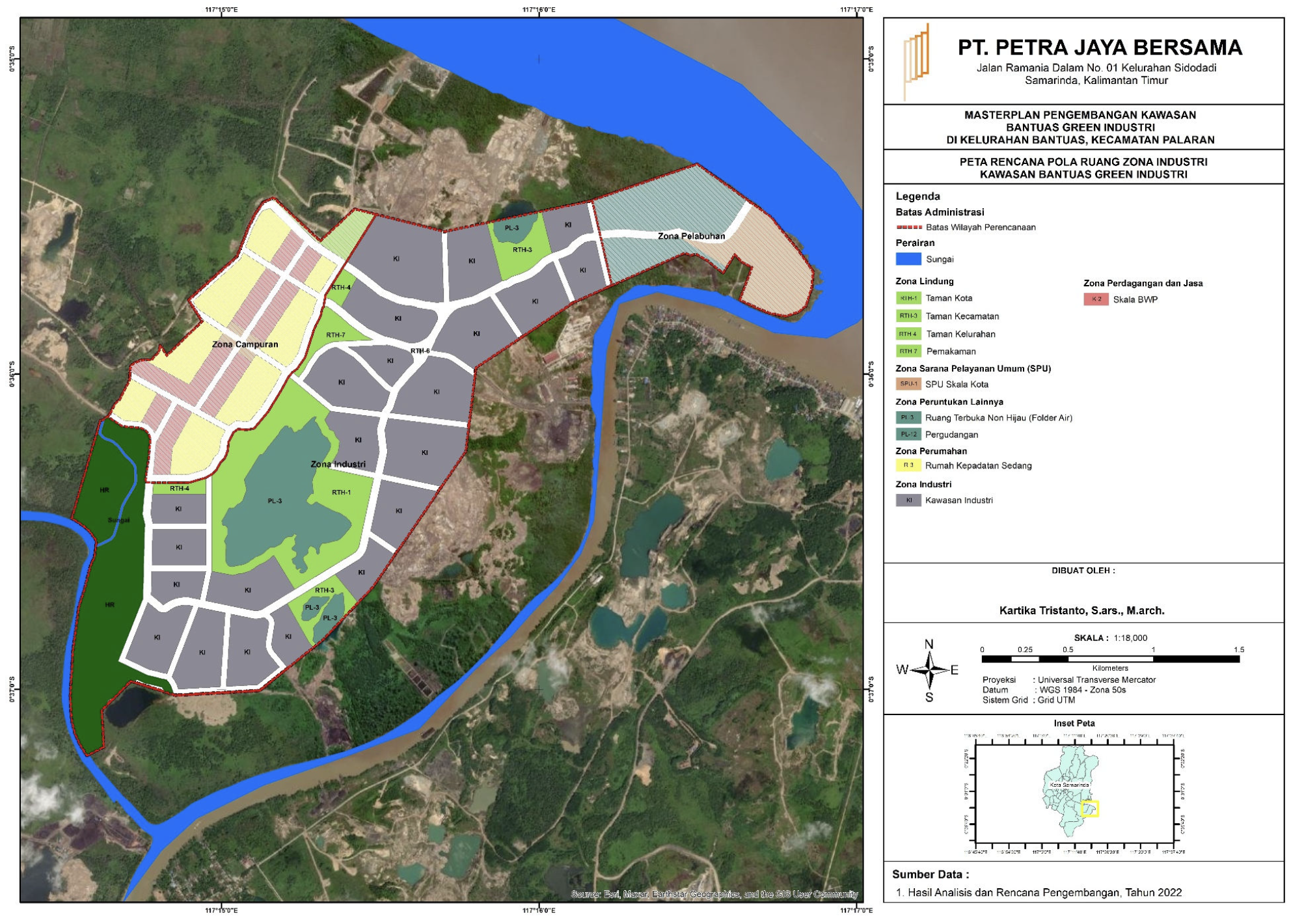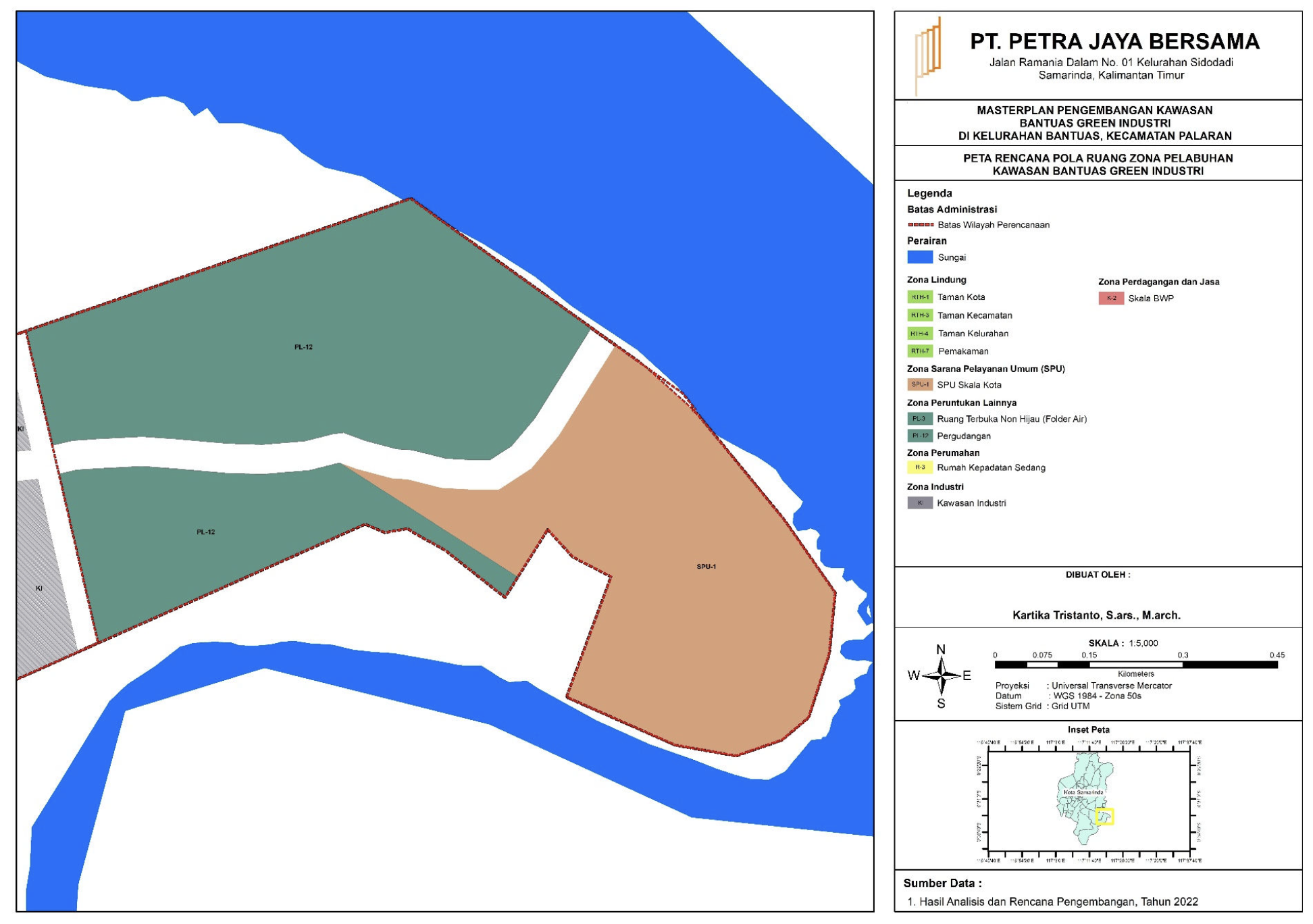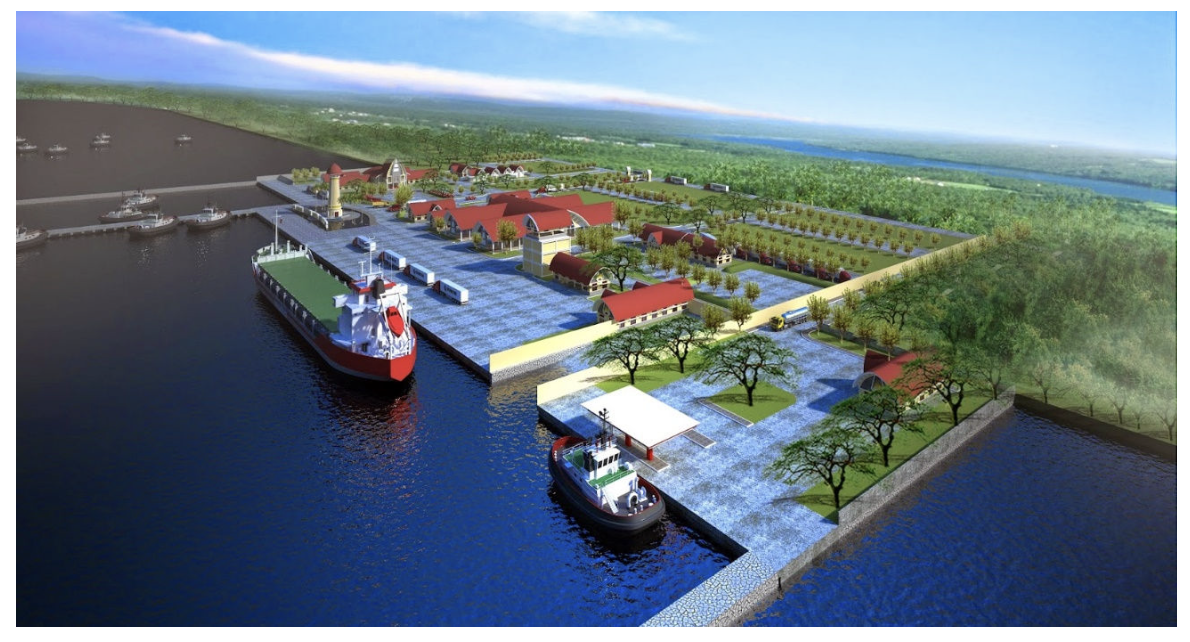Tentang Investasi
The second zone in the Bantuas Green Industrial Area is the main infrastructure zone within the industrial area, due to the presence of a bulk port to support the accessibility of the industries that will operate there. The bulk port is planned to provide services up to the national level, crossing inter-provincial routes. This zone is also expected to become a potential public infrastructure for the people of Samarinda City, as it will serve as a general port. This zone has a total area of 42 hectares.
A. Spatial Plan
According to the Regulation of the Minister of Agrarian Affairs and Spatial Planning No. 16 of 2018, several classifications of spatial plans are included in the Regional Spatial Detail Plan (RDTR). According to this regulation, the port area can be classified as a public service zone (SPU). Based on the concept of the spatial plan, the port zone will include:
- Public Service Zone with a total area of 18.91 hectares
- Warehouse Zone with a total area of 18.62 hectares
- Road Infrastructure of 4.47 hectares
These two zones have different functions and roles. The public service zone will become an infrastructure zone supporting industrial activities in the form of a bulk port providing services up to the national level, while the warehouse zone will be used for the storage of goods to be distributed outside the region or bulk materials entering the industrial area.
B. Unit Calculation
Based on the conceptualized spatial plan, there is designated space that has the potential to create a need for human resources as a workforce. The designated warehouse zone covers an area of 18.62 hectares, and based on this area, the number of available units can be determined according to standard warehouse sizes per plot. According to studies of existing warehouse areas in various cities, an ideal warehouse has an area ranging from 5,000 m² to 10,000 m². In this area, large-scale warehouses will be needed to support industrial activities within the area as well as other activities in Samarinda City. In this concept, the planned warehouse unit size is 10,000 m²/unit. With a warehouse zone covering 18.62 hectares, the number of available warehouse units in this zone will be 18 units.
C. Potential Workforce Absorption
The operation of the warehouse area will certainly require workers in various roles, such as drivers, administrative staff, cashiers, marketing personnel, and others. This could provide a good opportunity for the community by creating jobs. From the existing warehouse areas in Samarinda, these warehouses have varying numbers of workers, but on average, a warehouse with an area of 1,000 m² requires a total of 20 workers. Based on this, it is estimated that 1 worker is needed for every 50 m² of warehouse space. The warehouse zone covers an area of 18.62 hectares or 186,200 m², and using the assumption that 1 worker is needed for every 50 m², the potential number of workers in the warehouse zone is 3,724 people.
In the public service zone, which consists of the bulk port, covering an area of 18.91 hectares, many workers will also be needed to support port activities. Bulk ports are typically associated with bulk material loading and unloading activities, which will create the need for a workforce in the port sector. Workers involved in loading and unloading activities (TKBM) are commonly referred to as stevedoring gangs. The minimum standard for stevedoring gangs is regulated in the Ministry of Transportation Regulation No. KM 35 of 2007 concerning Guidelines for Calculating Service Tariffs for Loading and Unloading Goods from and to Ships at Ports. According to this regulation, the labor requirements in the loading and unloading area are as follows:
- Non-mechanical Loading/Unloading (Stevedoring): 12 people, divided into 1 foreman, 3 crane operators/pilots, and 8 crew members.
- Cargodoring: 24 people, divided into 2 foremen and 22 crew members.
- Receiving/Delivery: 12 people, divided into 1 foreman and 11 crew members.
Similarly, loading using mechanical equipment and pallets will have specific requirements. These loading and unloading activities are supervised by various supervisors, such as a Chief Tally Clerk, foreman, Tally Clerk Mistry, Quay Supervisor, and Watchman. The loading and unloading activities are carried out by a Loading and Unloading Company, which includes personnel involved in stevedoring activities, warehousing, and storage yards. These activities are overseen by a head of stevedoring and warehousing, along with administrative staff responsible for recording all activities at the terminal.





